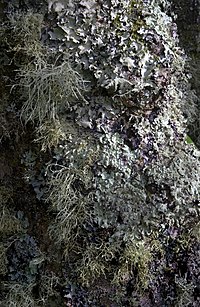
Photo from wikipedia
Plant litter decomposition is a complex, long-term process. The decomposition of litterfall is a major process influencing nutrient balance in forest soil. The soil microbiome is exceptionally diverse and is… Click to show full abstract
Plant litter decomposition is a complex, long-term process. The decomposition of litterfall is a major process influencing nutrient balance in forest soil. The soil microbiome is exceptionally diverse and is an essential regulator of litter decomposition. However, the microbiome composition and the interaction with litterfall and soil remain poorly understood. In this study, we examined the bacterial and fungal community composition of Lithocarpus across soil samples from different sampling seasons. Our results displayed that the microbiome assembly along the soil layer is influenced predominantly by the soil layer rather than by the sampling season. We identified that the soil layer strongly affected network complexity and that bacterial and fungal microbiomes displayed different patterns in different soil layers. Furthermore, source tracking and community composition analysis indicated that there are significantly different between soil and litter. Moreover, our results demonstrate that few dominant taxa (2% and 4% of bacterial and fungal phylotypes) dominated in the different soil layers. Hydnodontaceae was identified as the most important biomarker taxa for humic fragmented litter fungal microbiome and Nigrospora and Archaeorhizomycetaceae for organic soil and the organic mineral soil layer, and the phylum of Acidobacteria for the bacteria microbiome. Our work provides comprehensive evidence of significant microbiome differences between soil layers and has important implications for further studying soil microbiome ecosystem functions.
Journal Title: Journal of Fungi
Year Published: 2022
Link to full text (if available)
Share on Social Media: Sign Up to like & get
recommendations!